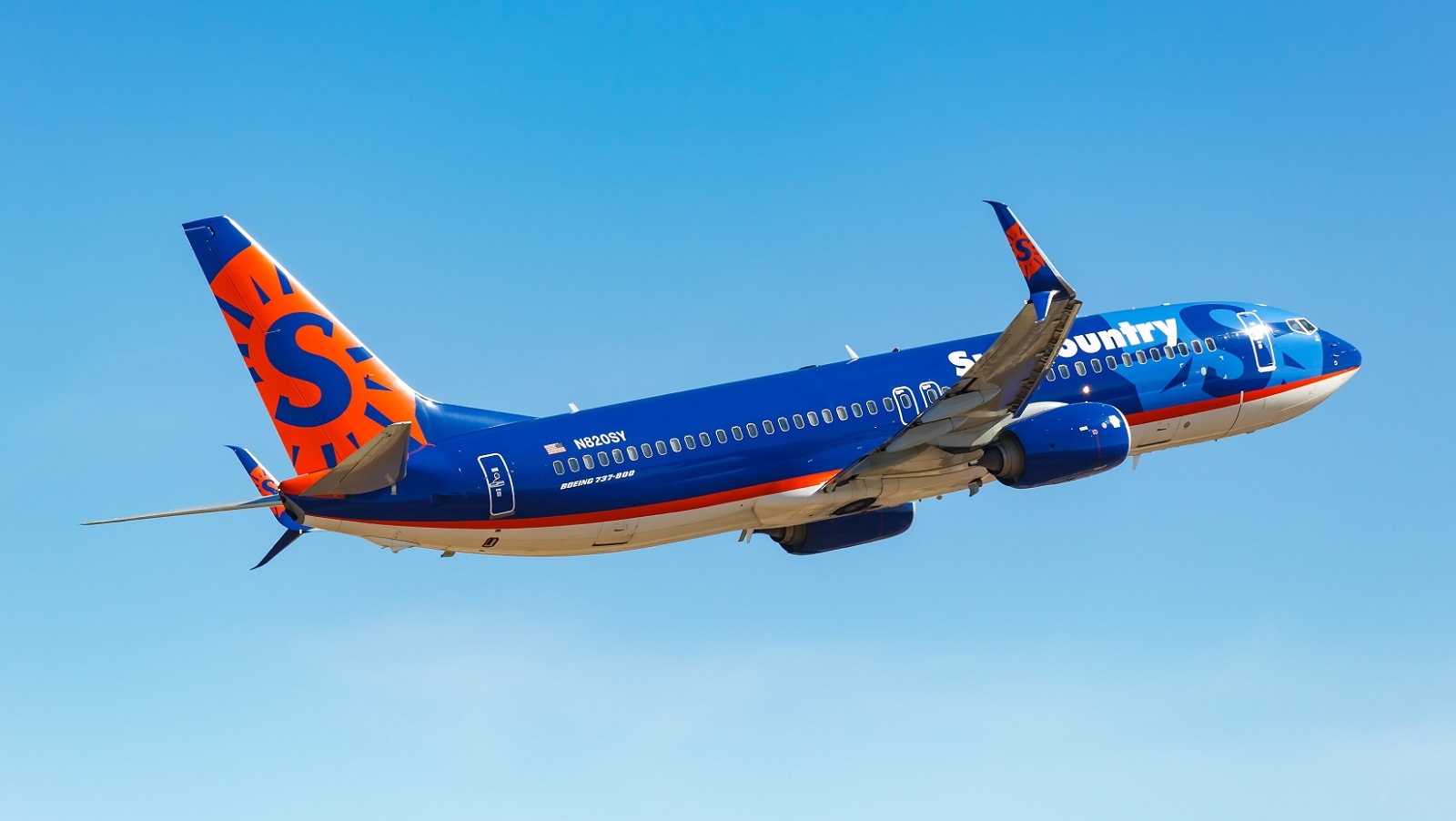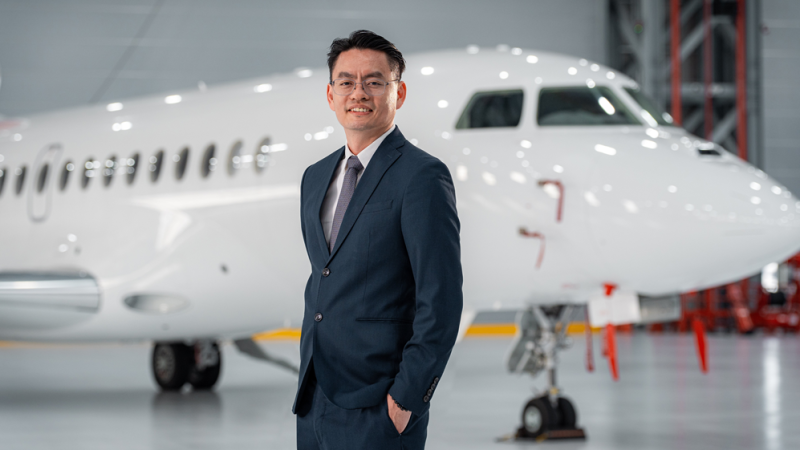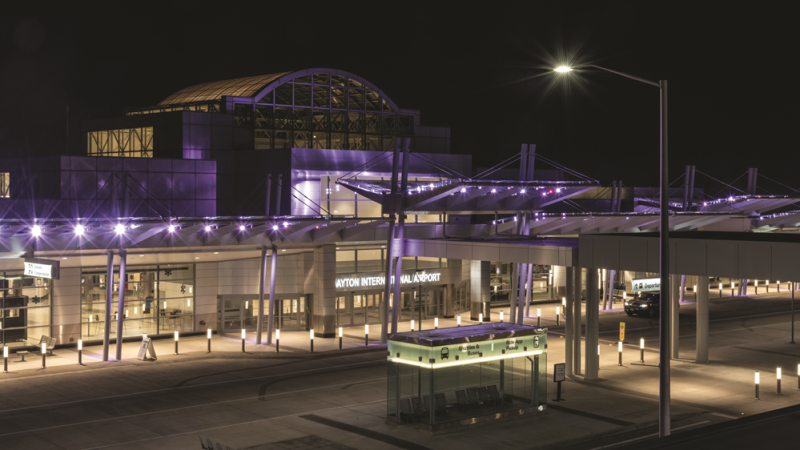It is just over a year since we last spoke with Kevin Klein, Chief Executive Officer of Cherry Capital Airport. When we spoke then, Klein told us that “The future is bright” for the airport. Time seems to have borne out his prediction.
“It’s been a really good year in a lot of different ways,” Klein tells us. “Passenger traffic has remained strong even with the industry challenges we are seeing in terms of pilot and aircraft shortages.”
Their airport saw 582,000 passengers in 2022, its second-best year compared to 2021. Those numbers are all the more impressive in the context of the challenges and cutbacks seen across the USA.
“We are seeing markets losing 30 to 40% of their traffic,” Klein points out. “We are faring pretty well in comparison.”
Cherry Capital returned to close to 100,000 total aircraft operations last year. Its fuel sales were up in 2022 by about 15%. Across the board, the airport is seeing positive trends. One of its biggest 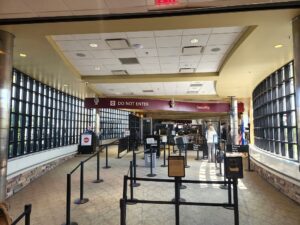 achievements has been the announcement that another airline is beginning service here. In June of this year, Sun Country Airlines is beginning service to Minneapolis/St. Paul Minnesota.
achievements has been the announcement that another airline is beginning service here. In June of this year, Sun Country Airlines is beginning service to Minneapolis/St. Paul Minnesota.
“It is an ultra-low-cost carrier, which will take us to five airlines serving the airport,” Klein says. “That is our biggest accomplishment.”
Cherry Capital’s other accomplishments include two key projects it has been developing over the last year. First, a major parking lot expansion has been implemented. The airport’s parking facilities have been expanded by 40%, adding another 430 parking spots.
“That has been a major improvement, not only from a customer convenience perspective but also a quality-of-life perspective,” explains Klein. “It is relieving the common air travel stress of being unable to find a parking spot. We were at maximum capacity before Covid. We have increased that capacity and we are heading into Spring Break and we are already pretty close to capacity.”
The aviation side of the airport has seen major corporate investment in providing fuel and services to the airlines operating here. A $7-million investment is being made into building a new hangar space that has already begun construction and is due to be completed this summer.
“We have increased the fuel farm size by 20,000 gallons to 70,000 gallons of jet fuel,” Klein adds. “That was great. They have committed to building a brand new building with the FBO to act as a general aviation lobby where general aviation passengers can meet corporate aircraft.”
Applying Data
Among the investments and collaborations Cherry Capital completed recently is a landmark project in partnership with the Transportation Security Administration to add a third checkpoint lane.
“This is bringing wait times down from 30 to 40 minutes to five minutes or less,” Klein emphasises. “That was a big addition, and it happened very quickly, which is why it is one of my favourite projects.”
The project launched in March last year when the TSA approached the airport saying they had funds available for the development, but not the necessary design and construction capabilities.
“We partnered with them to get that done before the peak season in June started,” Klein recalls. “It was a 90-day project from start to finish. For government projects, ‘days’ is not normally the sort of vocabulary we use! That was a fantastic project that has really impacted our operations for the better.”
The project’s rapid turnaround has been made possible thanks to Cherry Capital’s fastidious approach to gathering and analysing data.
“We have been working with the TSA closely while looking at the airline schedule, watching passenger numbers increase, the types of aircraft that come in and the times of day they come in,” Klein says. “We have a lot of passenger throughput studies that indicate their model needed to change. TSA leadership noticed that also.”
The data shows that over the last ten-to-twelve years Cherry Capital Airport has almost doubled its traffic. The TSA took notice of that growth and realised it had to change some of the airport’s throughputs as wait times approached 40 minutes.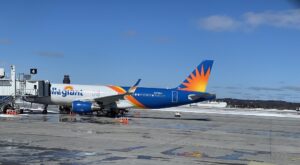
“When they were able to achieve the funding to do that, they reached out right away and said ‘We have got the equipment, will you help us design and administer the construction program?’” Klein says. “We did that, and it was very successful. It demonstrates that passenger data is a critical tool.”
That data comes directly from the airlines themselves. Each month they collect data from Cherry Capital’s operations, including how many people board and disembark from planes, the number of landings and the types of aircraft that use the facility.
“We also collect and utilise data on any freight the airlines might carry, tracked over time,” Klein says. “We look at data supplied on future bookings and future schedules. That all impact the number of people going into the checkpoint.”
A Vision for the Future
All that data gives Klein a clear vision of Cherry Capital Airport’s future, and it tells him that the region is seeing a great deal of new demand.
Klein is looking forward to this year’s air show at the National Cherry Festival, which will see the return of the United States Airforce Thunderbird F16 demonstration team. The Great Lakes Equestrian Festival has expanded again, bringing in a lot of large corporate aircraft from early June through September. There is a lot to look forward to this summer, with Covid restrictions lifted, the Traverse City Film Festival is returning to full capacity and 2023 is looking like a growth year.
Klein is already working out how to respond to it.
“We have a facility with five gates and jet bridges and two ground loading positions, a total of seven,” he explains. “We are looking to add an additional five jet bridges. To do that we need to complete several other projects in the meantime. We are going to add 260 feet to the air carrier ramp for more aircraft parking, not only for the expansion but also to add immediate relief for ongoing growth and to provide additional parking during construction.”
Work is slated to start in the summer for completion by fall this year. At the same time, a bipartisan infrastructure bill has provided $5.2 million in funding for new bridges at gates one, three and four of the airport’s existing terminals.
“We are working on the final approval processes. The environmental report is ongoing, financial planning is complete and design will be complete by 2024 for those five additional gates, with shovels in the ground by 2025,” Klein tells us.
